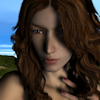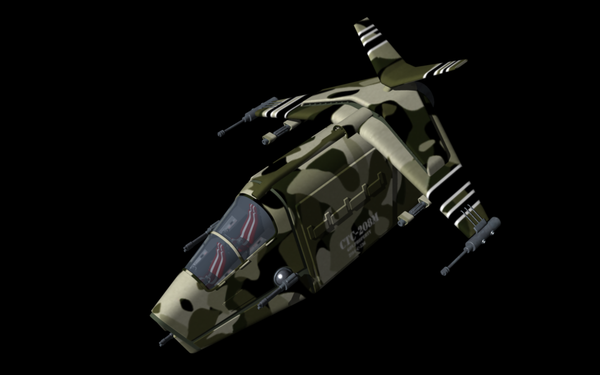Background Check!
 static
Posts: 325
static
Posts: 325
I was making some quick renders today, just for kicks, when I noticed that they were all coming up with a black background, like the image below.
Up 'til now, I've been doing tutorials for designing objects and the background was always white (or transparent, I didn't much check on it because they were tutorial works). I don't recall any instructions for changing the background, but black isn't the best of choices for default (in my opinion).
Is there a way to change the default background color (and what is it...for those who only answer these questions literally - you know who you are :coolhmm: :-))?
EDIT:
Forgot the image! :red:


Testing.png
960 x 600 - 174K
Post edited by static on


Comments
I don't think there is a background colour setting for renders. This is because Carrara is trying to create a realistic render of your scene, and if there is nothing behind the object to reflect any light then it just shows blackness. There is a background colour setting for the preview but this doesn't affect the final render.
If you want a white or coloured background then you can put a plane at the back of your scene and colour it as you want it. If you switch off "Receive Shadows" for the plane and in it's shader set Colour to none and put the colour in it's glow channel you will get a background that is even and unaffected by your lighting setup.
You can get a transparent background if you go to the render settings, select the output type as PNG and switch on "Render Alpha Channel". With these settings Carrara treats nothing to show as being transparent. jpeg files do not support transparency.
I don't see why they don't give it a background setting for renders. It just seems to me that you would want to check your elements for clarity before you start adding more stuff to the scene. Maybe I'm just making extra work for myself.
I knew the png was capable of either or, I just didn't realize it was the alpha channel that switched it.
I will give these tips a go and see what happens.
Thanks for the help!
Here you go:-)
Sounds to me like you were rendering using a file type that supported alpha.
PNG would be one type. That could render clear if alpha channel was selected in the render window.
sounds like you rendered to a different file type that doesn't support alpha ( like jpeg) or you turned off alpha channel
On a file type that does like zpng.
8068
No, actually 95% of my work I render in png.
This shows my render settings for my latest render using the recommended settings Peter Wade suggested and which you yourself, have reiterated.
I still have a black background.
Also, I tried the background and backdrop color settings that stu sutcliffe showed and I still get a black background
I did, however, stumble across using an infinite plain(as opposed to a normal plane) and got a grey background, instead of black. I then set the Shading on the infinite plane to a transparency preset and got a blue background.
I still cant find a way to make it a true transparent background.
Also, note that in the last one, blue background, the windows are no longer transparent.
Didn't you see Stu's response above two posts? He shows you where to set it. ;-)
Yes, and that worked great for the color background, but not for transparency, a clear background.
I still can't make it transparent.
I bet it has everything to do with your shell enhancement software that's changing the appearance of Windows as it is. Window Blinds is it? Watch out running that stuff on your graphics creation machines as they screw with things that shouldn't be screwed with. Just a thought, and I apologize if I'm wrong on that - it's just an idea.
It still shows as black in the Carrara render window. You have to save the image as a .png and load it into an image editor to see the transparent background.
If you open your PNG with Alpha ( and black background) in Your image editor it should be transparent where the black is? I think Carrara just shows it black...just because it does.If you render the background a colour. it will still appear black if you use render with alpha. I think Photshop shows the transparent bits as a white and grey checker.
Well, hey! That works.
I could tell even before I opened it in PD Pro, because it showed in Windows Explorer as transparent.
Well, that's an extra step I'll have to take, but at least I know it's doing something. And now, thanks to you three, I know how to manipulate the backgrounds and backdrops as well.
Thanks much!
That is correct Carrara just shows it black. Also depending on what image program you use to open it you may not see white and grey checkered bits. I discovered that last year when I was working on an unfinished tutorial about using 3D programs to create PNGs for 2D mapping software programs that use PNGs for symbol sets.
What I said was correct. Set your background in the scene settings as none. Use PNG with alpha. When rendering the Carrara preview shows
nothing or Alpha as black. When you open the image in another program it will have a transparent background. I do it every day.
8068, I apologize. I misread your post and it sounded like you were saying that I was not using a png format. Yes, what you said was, indeed, correct.
Thank you for correcting me. You have all been of great service to me this morning.
As for Carrara showing black regardless...
That is the first time I have ever come across software that did not show a transparent background as transparent. There's probably a whole bushel of them out there that do the same thing, but this was a first for me. Well, its just as they say, "you learn something new every day"
Today's lesson - learned.
Just curious, what would transparent look like normally? There has got to be something/colour in the background, black is as good a choice as any. Though I suppose the checker version in Photoshop is more intuitive and looks as though it is doing something!
It's a bit hard to explain, because, as you say, something must be behind it. The color of what's behind it, however, changes depending on what you put it on.
Looking at the picture in post 5 above, shows that black is one of the worst background choices for the subject because some of it's painted areas seem to become the background, as if they were not part of the subject at all.
Most programs that yield a transparent background for pngs, allow you to set the transparency to all or "checkered". The checkered look gives a checkerboard patten of clear and grey, so that you can actually see that it is, indeed, transparent, and not just white (or what ever color you have behind it). When the transparent image is placed on, say, a photo realistic scene (such as a beach or glen), everything that is not the subject is invisible so the image blends better with the background image.
There are no black outlines from a low-grade shot, or white outlines from a high-grade shot. If an area is enclosed, but should be clear (like a strung bow, for instance), the image will show the background through the opening instead of whatever media was there before.
In most GUI shells, such as Windows Explorer, when you hover over an image, it changes to a hue of some sort (reddish in mine) and as you mouse-over. If the image is transparent, you will see that hue as the background of the image's thumbnail, whereas, if it is an opaque image, the background will not change.
I hope that made sense.
Something else to remember:
Using transparencies in Carrara when rendering an alpha channel don't respect the alpha. You can see other parts of the model through the transparency, but the background you wish to composite the image over will not show through unless you also set the alpha channel in the shader to do so.
If you use a color or image in the scene's background or backdrop, they will show through the transparency, and respect any refraction or Fresnel effects so that is a workaround.
Even though the alpha is transparent the final render still has a background, whatever background (or backdrop) was set in the scene settings. When you click and drag a rendered image by it's frame in the render room, it should turn semi-transparent and show the areas that have the alpha as Carrara's default steel grey color (I don't know how it looks if you change Carrara's background color...). A little hard to see maybe, but it's showing you the full render.
In pixel parlance, your backdrop is red=0 green=0 blue=0... which is black, as you rendered it. There are a number of reasons why Carrara renders the background even when the alpha channel is used; premul alpha needs the color info, and there may be other aspects of post fx where you could use both the background and the alpha. It might help to remember that Carrara renders the full image before saving it to the output file format.
However if you render animations to an alpha format (like QT animation codec) the subsequent frames will only fill in where there is something to render.... unless you are using premul where the backdrop info is important.
stu sutcliffe said:
In Paintshop Pro you can configure the size and colour of the chequerboard, even make it a solid colour if you want to. In a paint program you need to be able to tell what parts of the image are transparent when you are editing, it isn't so much of an issue in other software.
Say, I think I might have mentioned this last night somewhere else... but the above post by Pete reminds me of this, as I'm having a blast with it right now:
Dogwaffle has a "Paint to Alpha" feature. Alpha in Dogwaffle is the imaginary line of a selection made real. Meaning that it is what is going on in the background of everything capturing anything you select as a selection. Hard to explain for me. Anyways, there's this curve tool that you can make poly lines or spline curves with. You can use this thing and create open or closed shapes and store that information to alpha. Afraid you might loose it? Make a quick 'store' of it. In Dogwaffle, you can continue doing anything you want, without much fear, because you can just store to image, over and over... at least if you have enough RAM for what you're doing, anyways. So while you're working with these selections, you can keep making more curves, use any style brush and just paint, oh... and there's all of the conventional ways of selecting too. Is it just me, or is this really unique? I've never known of such amazing selection power before! It can grow and shrink the selection too. Or blur it, sharpen it, use RGB values, use many many other filters. That crazy curve tool Rocks! You just keep adding points as you need them as you outline an object or shape, or just by freehand. Then you can have things follow it through an animation, or have thing follow it through without animation. My goodness... I'm glad I bought this!